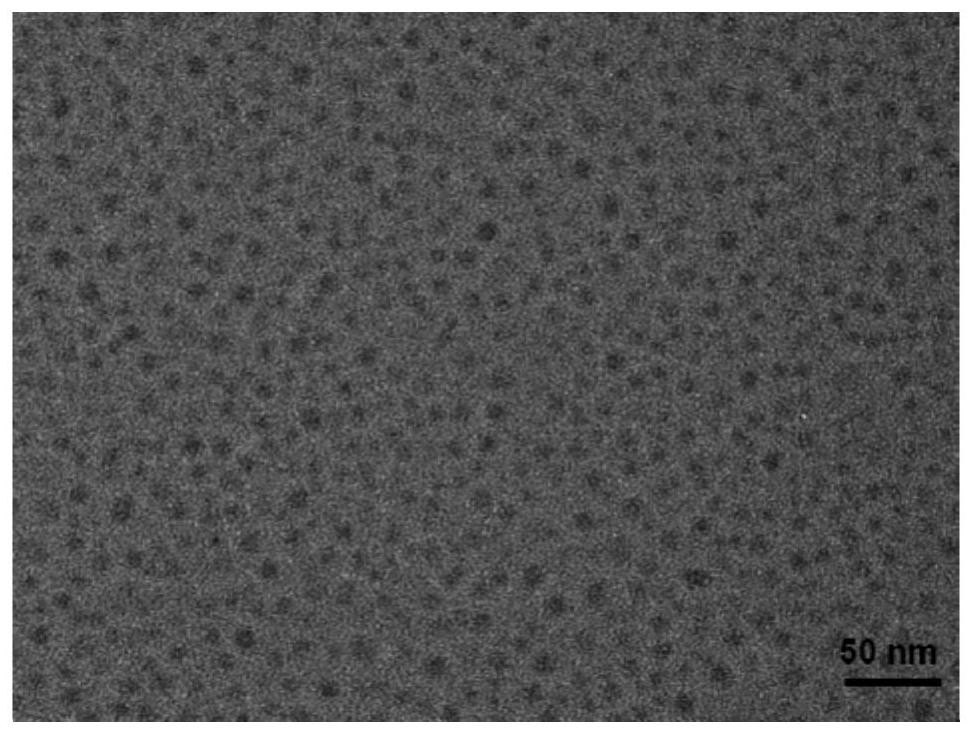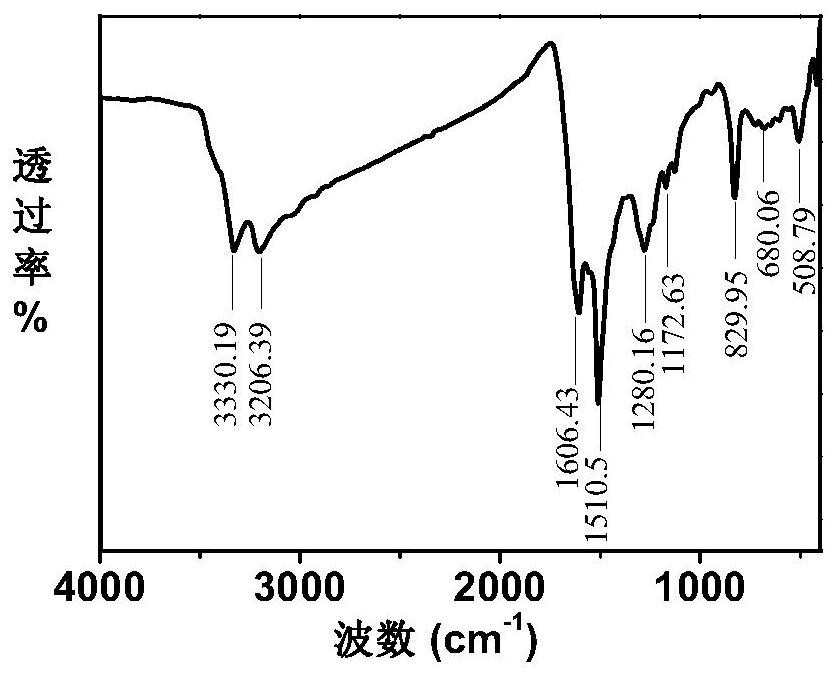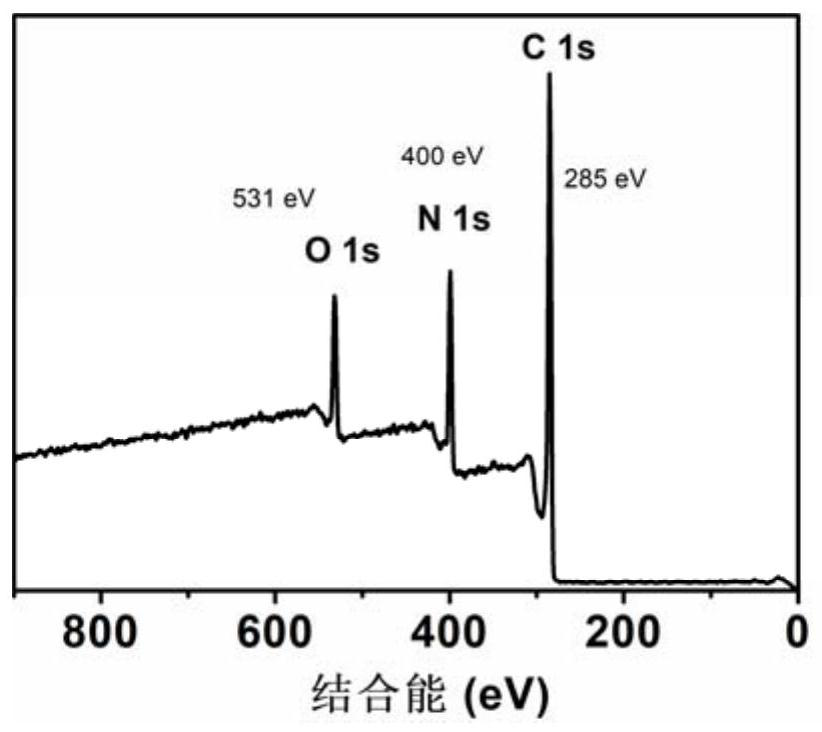Method for detecting activity of alpha-glucosidase
A glucosidase and detection method technology, applied in the field of biological enzyme activity detection, can solve problems such as fluorescence quenching, and achieve the effects of low detection limit, simple operation and good selectivity
- Summary
- Abstract
- Description
- Claims
- Application Information
AI Technical Summary
Problems solved by technology
Method used
Image
Examples
Embodiment 1
[0048] A method for preparing carbon quantum dots, comprising the following steps:
[0049] Dissolve 0.02 g of p-phenylenediamine in 10 mL of ultrapure water, and adjust the pH to 5–6 by adding 10 mL of 1 mM citric acid solution. The mixed solution was then transferred into a polytetrafluoroethylene stainless steel autoclave and 15 mL of ultrapure water was added, then the mixture was placed in an oven and heated at 180 °C for 12 hours. After 12 hours, the mixture was cooled to room temperature, centrifuged to obtain the clear liquid, and then dialyzed with a 500Da dialysis bag for 4 hours to remove unreacted substances, and the carbon dot solution in the dialysis bag was retained. The dialysate during dialysis was ultrapure water. The product was transferred to dry in a vacuum oven, redissolved into 0.35g L -1 The carbon quantum dots (CDs) solution was stored at 4°C for future use.
[0050] figure 1 It is a transmission electron microscope picture of CDs. It can be seen fr...
Embodiment 2
[0055] A quantitative detection of Ce 4+ method, including the following steps:
[0056] (1) Take 100μL 0.35g L -1 Carbon dots (CDs) solution, 100 μL of 1 mM TMB water and a specific concentration of Ce 4+ The aqueous solution was mixed in 100 μL of 0.2M pH 4.0 citrate buffer solution, then water was added to 1.0 mL, and mixed well, Ce 4+ The final concentrations in the reaction system were 0, 10, 20, 30, 40, 50, 60, 70, 80, 90, 100 μM; the Ce 4+ The source of cerium sulfate (Ce(SO 4 ) 2 );
[0057] The mixture was incubated at room temperature for 5 minutes, and then the fluorescence spectrum of each reaction system was tested at an excitation wavelength of 490nm. The fluorescence spectrum of each reaction system was as follows: Figure 5 As shown, it can be seen from the figure that with Ce 4+ As the concentration increases, the fluorescence intensity of the reaction system decreases gradually.
[0058] (2) with Ce 4+ The final concentration is the abscissa, and the...
Embodiment 3
[0061] A method for detecting α-glucosidase activity, comprising the following steps:
[0062] (1) Mix 200μL 0.5mM ascorbyl glucoside (AA-2G) solution with 50μL α-glucosidase solution of different concentrations, then add 10μL 0.2M PBS buffer solution with pH7.0, mix well and incubate at 37℃ 30 minutes;
[0063] (2) Then add 100 μL CDs solution, 100 μL 1mM TMB aqueous solution and 100 μL 1mMCe to the above system in sequence 4+ aqueous solution, then add 100 μL of 0.1M pH 4.0 citric acid buffer solution, and dilute to 1 mL with ultrapure water. After incubating at room temperature for 5 minutes, test the fluorescence spectrum of each reaction system at an excitation wavelength of 490nm, the fluorescence spectrum of each reaction system is as follows: Figure 9 Shown; The final activity of α-glucosidase in the reaction system is 0, 0.5, 1.0, 1.5, 2.0, 2.5, 3.0, 3.5, 4.0, 4.5, 5.0, 5.5, 6 U mL -1 ; The Ce 4+ The source of cerium sulfate (Ce(SO 4 ) 2 );
[0064] (3) With t...
PUM
 Login to View More
Login to View More Abstract
Description
Claims
Application Information
 Login to View More
Login to View More - R&D
- Intellectual Property
- Life Sciences
- Materials
- Tech Scout
- Unparalleled Data Quality
- Higher Quality Content
- 60% Fewer Hallucinations
Browse by: Latest US Patents, China's latest patents, Technical Efficacy Thesaurus, Application Domain, Technology Topic, Popular Technical Reports.
© 2025 PatSnap. All rights reserved.Legal|Privacy policy|Modern Slavery Act Transparency Statement|Sitemap|About US| Contact US: help@patsnap.com



